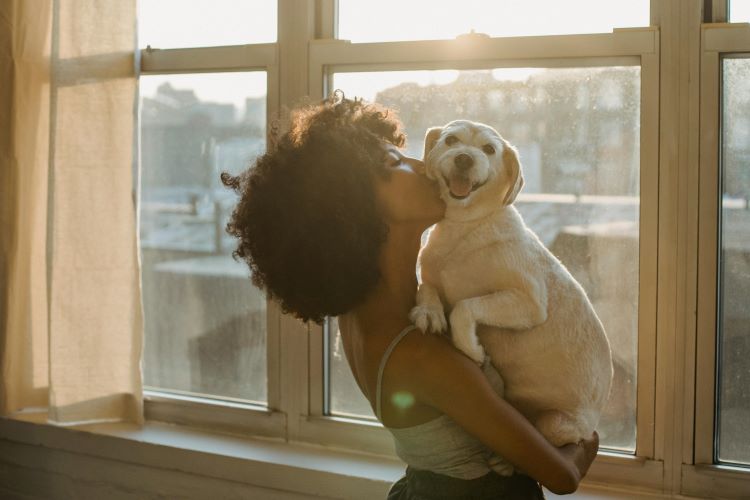Ready to help treat your pet to a healthy life?
Is My Pet Overweight? Important Questions for Pet Obesity Awareness Month
By : Brianna Gunter | Published Oct 10, 2024

Weight is a sensitive topic for humans, whether we’re talking about ourselves or our pets. The truth is that many health issues can be uncomfortable to discuss, but they’re nevertheless important. Obesity in dogs and cats is on the rise, putting our furry friends at greater risk of serious health complications. October just so happens to be Pet Obesity Awareness Month, and there’s no better time to take a closer look at this important issue.
If you’re concerned about your pet’s weight, it’s a good idea to have their veterinarian do a proper assessment. Though if you’re unsure if your pet is fat or even just a little overweight, gaining a better understanding of animal obesity can help. Here are answers to some common questions and additional ones that help explain this health condition.
What is obesity in pets?
Just like with humans, obesity in pets is a condition involving large amounts of excess body fat. In rare cases, certain tumors or hormonal health conditions may trigger obesity. However, the vast majority of cases are the result of overfeeding (eating more calories than calories burned) and/or lack of exercise or a sedentary lifestyle.
In addition to causing physical limitations for your pet, obesity can lead to various health problems like diabetes, heart disease, joint issues, and decreased lifespan. Excess weight can also worsen coexisting health conditions.
The main difference between pet obesity and that in humans is choice in lifestyle. While genetics and certain health conditions can play a role in obesity for all mammals, we humans are ultimately in control of our own food and exercise decisions. Dogs and cats are a different story. Sure, some may be naturally more active than others, and some pets may more readily eat food they have access to. However, the kind of food they eat and the portion size is up to the pet owner. It’s also on us humans to engage pets in daily exercise activities.
Prevalence
Obesity in pets is a growing concern. According to a 2022 survey by the Association for Pet Obesity Prevention, 59% of dogs and 61% of cats are overweight or obese. (The results of the organization’s 2024 survey were not in yet as of publication of this article.)
Nevertheless, trends over the past decade have shown a clear rise in obesity rates among both canines and felines. Case in point: a 2014 study found 30% to 40% of dogs and cats were overweight to obese and described the issue as having reached “pandemic proportions” at the time.
Is obesity an illness?
Obesity is most commonly described as a health condition, in both pets and humans. However, it is also occasionally referred to as a disease or illness. But does it really fit that criteria? The truth is that it all depends on where you look. Both Cleveland Clinic and Mayo Clinic refers to obesity as a disease, for example. Among other reputable medical organizations (for both humans and pets), that designation is still up for debate and likely won’t be resolved anytime soon.
The important thing is, whether or not you wish to think of pet obesity as a disease or illness, it is a serious health condition. We’ll get into taking action in just a little bit, but it can’t be stressed enough that you shouldn’t let an obese pet’s weight go unaddressed.

What health conditions are associated with obesity?
In order to understand just how damaging obesity can be to your pet’s health, it’s worth taking a closer look at the associated health risks. Common veterinary health problems resulting from or strongly correlated with obesity include:
- Diabetes Mellitus
- Arthritis and joint issues
- Heart disease
- Respiratory problems (including brachycephalic airway syndrome)
- Hepatic Lipidosis (fatty liver disease)
- Cancer
- High blood pressure
- Kidney problems
- Overheating and heat exhaustion
- Pancreatitis
- Skin and coat infections and irritation
- Decreased mobility and energy
- Shortened lifespan
Does pet insurance cover obesity-related conditions?
It’s no secret that veterinary treatment can be expensive — especially when it comes to things you didn’t plan for (like illness due to obesity). Signing up for pet insurance is a great way to protect your dog or cat from unexpected healthcare costs.
If your pet develops a condition related to obesity, their treatment for that condition may be covered as long as it cannot be considered pre-existing. For example, diabetes, cancer, infections, kidney issues, and skin issues are all conditions commonly covered by Trupanion.
How can I tell my pet is fat?
The term “fat” is often subjective. What some pet owners may see as just a cute, chonky dog or cat, others may see as an animal with serious health risks. If your pet is at a dangerous weight, your veterinarian will let you know at their next checkup. Nevertheless, you don’t have to wait for your pal’s annual exam to know if they’re at risk. There are a few basic ways to check your pet at home and get a feel (literally) for where their weight’s at:
1. Visual signs
Your pet’s physique will vary depending on their breed (and, naturally, their species). However, a healthy pet should have an easily noticeable waist when viewed from above. When viewed from the side, there should be a slight tuck in the belly.
2. Physical touch
If your pet is at a healthy weight, you should also be able to feel their ribs without pressing hard. If these features are difficult to see or feel, your pet may be overweight. Obese pets will also be heavier to lift and may have noticeable rolls or a saggy belly that feels full to the touch.
3. Lifestyle changes
Cats and dogs who’ve gained weight may reflect it not just physically, but with behavioral changes. This can vary from pet to pet of course, but signs to look for here include reduced stamina, difficulty with physical activities, and/or reluctance to exercise. Your pet may also be drinking more water than usual if they are already suffering from an illness related to obesity, like diabetes.
How is cat and dog obesity diagnosed?
If you are concerned about your pet’s weight, it’s time to make an appointment with their veterinarian. Only they will be able to properly diagnose obesity and calculate your pet’s risk of related health issues. Because this risk may be anywhere from mild to severe, it’s a good idea to not wait until their annual exam for this assessment.
Obesity is typically diagnosed by evaluating your pet's body weight, comparing it to breed standards, and evaluating body condition scores (BCS). If your pet’s weight is deemed to be an issue, your veterinarian will then recommend key changes you can make to help your pal become fit again. Proper diet management, portion control, and regular physical activity are key in preventing and treating pet obesity, improving their quality of life and overall well-being.

What should I do if my pet is obese?
First? Don’t panic. Nobody likes to hear that their pet is dealing with a health problem, and finding out your pet is obese can feel defeating. After all, we pet owners hold a great deal of influence (if not full control) over our pets’ food and exercise routines. However, it’s crucial to not dwell on self-blame. Life gets busy, and excess weight often builds up subtly over time. Having an overweight dog or cat is a common issue that happens to a lot of well-meaning pet owners.
After talking with your pet’s veterinarian, following through with their recommended treatment is key. This will likely include making some lifestyle changes, like getting your pet more exercise and changing their food patterns. Adapting to these changes may be challenging at first for both you and your furry friend, so be sure to talk with your vet again if you’re struggling.
The focus on your pet’s weight should be year-round, not just during Pet Obesity Awareness Month. For more tips, check out how to help your dog lose weight.
